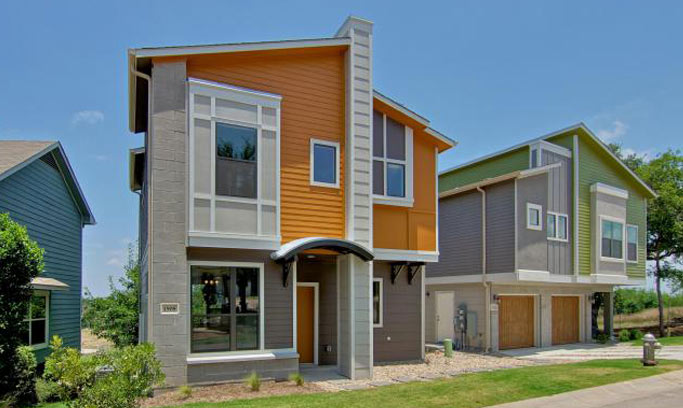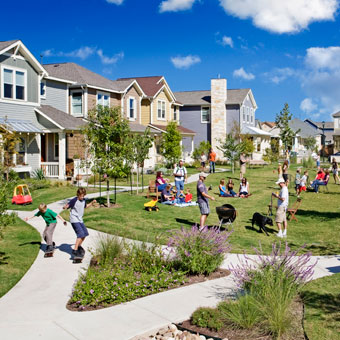I wanted to start writing some basics about how development works in our city. Because I think a lot of people have misconceptions. I used to have a lot of misconceptions. When I got out of college and rents started going up in the dot-com boom I was pissed. I was sure there was a way to stop all this condo building and get things back to normal. Surely the city was doing something wrong to make all this happen! I went looking for answers and realized much of how I thought things worked was completely wrong. Like I was a rube – playing into the hands of wealthy landowners twirling their mustaches – wrong.
Misconception 1: Zoning
I’ll admit. I used to think that if the city zoned something, that was what went there. If you re-zoned a lot as multi-family, then BOOM condos. This must be a side-effect of playing SimCity. Because in real life that’s not what happens at all. Frequently the city rezones, and nothing happens. For decades. Perhaps centuries.
Zoning only matters if developers decide they can make a profit building on an empty lot. For something to be built you need:
1) An empty lot.
2) An empty lot zoned to something useful.
3) An empty lot zoned to something useful that a developer thinks they can make a profit building on.
Everything that is built is expected to turn a profit. This was kind of hard for me to take at first. Because I like to think of human beings as nice people who do nice things. And there are like 2 of them who are real estate developers. But they don’t really make a dent on the system. 99% of the developers are driven by profit and so that’s how things work. I hate that world. But that is how it works.
Misconception 2: Zoning and Single Family
One of the biggest complaints I hear with rezoning for duplexes or condos in single-family neighborhoods is that the city wants to make everyone live in an apartment. While apartments are much more effecient and require less cost to the city in terms of maintaining sewers, electrical, and gas lines, the fact of the matter is – the city cannot change your home.
As long as you live in it. Your home will be single-family. The city cannot convert your home to an apartment.
If you like your home, and you own it, then by and large it will stay exactly as you want it until you die.
Except your grass. Even the City of Austin has ordinances about mowing it.
Misconception 3: Condos and You
Right off the bat. Everyone knows condos are bad, right? I used to think that if the city didn’t multi-family we’d have no condos and cheap single family housing for all!
But you know what? You probably know someone who owns a condo, and multiple people who rent condos. You probably think of it as an apartment. But legally underneath it’s a condo.
This is a condo:

It’s all about technical legal nonsense and has nothing to do with what the housing looks like. Julie and I were at one point building a 2200 square foot freestanding home (front yard, back yard, fence, garage…) that was technically a condo.
The apartment you lived in in college may have been a condo that was rented to you. A huge number of Austinites rent condos from condo owners. When you’re renting the different between renting an apartment and a condo is negligible.
When you carp about condos you might as well be carping about blue houses raising the cost of living in Austin. Who technically owns the land underneath the building is not what’s raising prices.
Misconception 4: Doing Nothing Is Best
In Austin there’s a conception that doing nothing is best. That building new condos near you will raise prices. And there’s some truth to that. Because remember – developers doesn’t built it until they think they can make a profit.
But there is a cost to doing nothing. Every day 110 people move to Austin. As a renter you sign a lease that contractually freezes your costs for a year or few. Home owners get 30 year mortgages that (mostly) insulate them from changes in the market. When renters leases come up for renewal they’re frequently shocked by the amount their greedy landlords have raised their rents. That’s the cost of doing nothing. Once a year homeowners with mortgages are shocked by the amount their home value went up – the cost of doing nothing again.
During the space of a 1 year lease 40,000 new people have moved to Austin. At least some of them may have more money than you and are desperate for a place to live. All year they’ve been subtly bidding up the price of your apartment while your rent has been locked. So you get the sticker shock when your lease is up for renewal, or when you find out how much they’ve paid for the house next door.
When a neighborhood defeats a new condo development or delays it they’re thwarting some of those 40,000 people from finding a place to live. And so those 40,000 people may decide to pay even more for the housing that exists. And each time they do housing prices and tax valuations go up just a bit more. Multiplied by 40,000. Every year.
So What To Do
I highly recommend reading Dan Keshet’s musical chairs housing model. In a game of housing musical chairs people who have more money will always get housing. The only way to ensure there is enough housing for you, is ensuring that there are enough chairs.
By deciding to work within the system I’m not saying I like the system. I’m not saying the system is fair. I just want my friends to be able to afford to live in the city. I want my tax valuation to stay low enough so that I can continue to live in the city.
We need more chairs.


